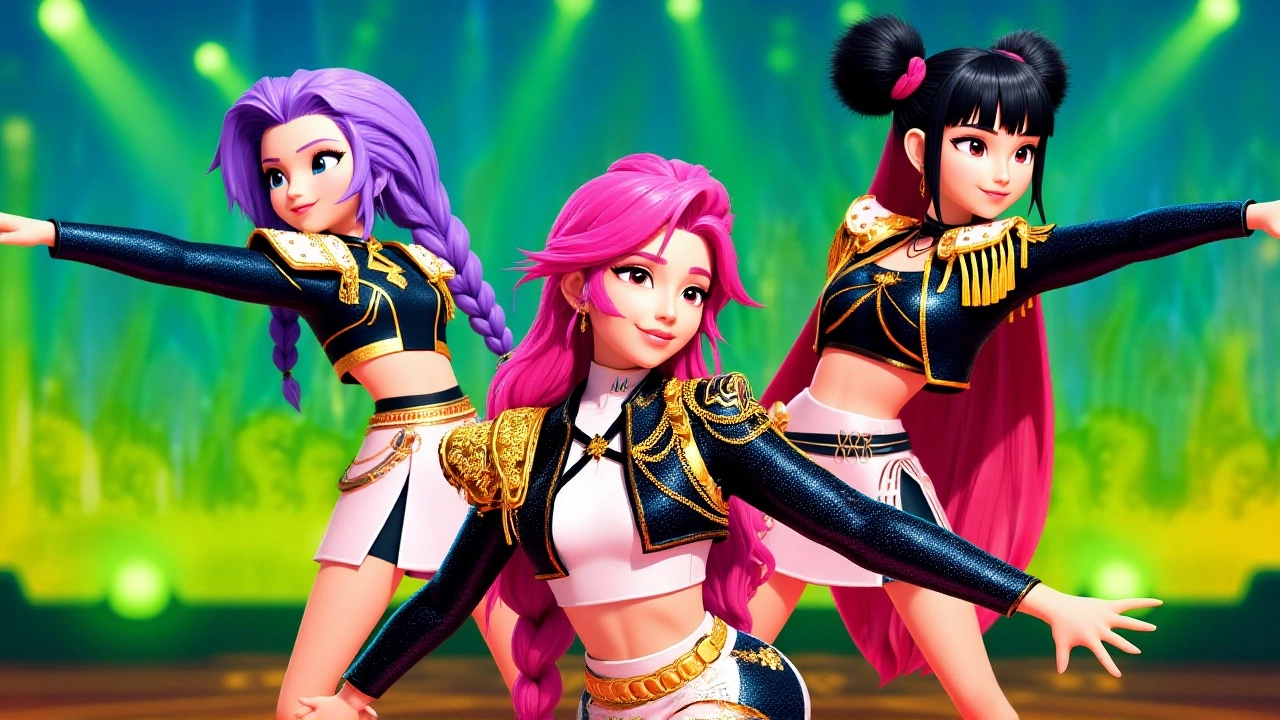When Benito "Bad Bunny" Martínez, the Puerto‑Puerto reggaeton star hosting the Saturday Night Live season‑51 opener, tossed a curveball into the live audience, the surprise came from a fictional K‑Pop trio called HUNTR/X – billed as the "KPop Demon Hunters". The sketch aired on October 5, 2025 at 8:00 PM EST from NBC’s New York studios, marking the group’s first ever TV appearance. In a five‑minute‑and‑59‑second bit, host Bad Bunny joined cast veterans Mikey Day, Sarah Sherman and Chloe Fineman to riff on the hype surrounding the "demon‑hunting" act while HUNTR/X performed an original‑sounding chant that spiraled between English and pseudo‑Korean phrases.
Why a Fictional K‑Pop Act Got a Spot on SNL
It might sound odd to slot a make‑believe group into a live‑satire show, but the move fits a broader trend of SNL using absurdist skits to comment on viral music moments. Earlier this year, the series featured a TikTok‑driven meme about BTS‑style dance challenges, and that segment racked up over 2 million views on YouTube alone. The producers, led by Lorne Michaels, told The Hollywood Reporter they wanted something that felt like a "cultural flash‑in‑the‑pan" – and the HUNTR/X notion, originally a joke on a Korean fan forum, fit the bill perfectly.
Inside the Sketch: What Actually Went Down
The scene opened with Bad Bunny perched on a couch, sipping a coffee that read "¡Vamos!" While Mikey Day pretended to be an over‑enthusiastic music‑journalist, Sarah Sherman played a bewildered fan, and Chloe Fineman took on the role of a skeptical record‑label exec. Their banter peppered the sketch with jokes about “demon‑hunting lyrics” and the accidental meaning of "Gwi‑Ma" – which, as the trio’s mock‑leader explained, translates to "ghost‑chaser" in a nonsense Korean‑sounding language.
When the beat dropped, HUNTR/X launched into a chorus that rang out: "We're going up, up, up, It's our moment, You know together, we’re golden…" The choreography was deliberately goofy – think synchronized arm‑flailing mixed with bold hand‑gestures that resembled a video‑game spell‑cast. Even Bad Bunny jumped in, shouting "Take that, Gwi‑Ma!" along with the singers, blurring the line between host and performer.
Audience Reaction and Social‑Media Ripple
The live audience erupted, and the instant replay on Peacock showed a mix of laughter and confused applause. Within an hour of the broadcast, the clip was uploaded to the official Saturday Night Live YouTube channel, where it amassed 1.4 million views and a flood of comments ranging from "this is the best thing SNL ever did" to "I actually thought they were real." Twitter trended #HUNTRX with over 12 k posts, many users asking if the group would release a real single.
Music‑industry analyst Jenna Lee of Billboard noted, "Even a fictional act can generate measurable buzz. If they drop a track on Spotify tomorrow, we could see a spike comparable to a surprise single from a mainstream K‑Pop idol."
What This Means for SNL and K‑Pop Culture
For SNL, the stunt underscores an evolving playbook: blending satire with pop‑culture immersion to stay relevant in an era where viral moments happen in seconds. The network’s parent, NBC, reported a 5% bump in live‑viewership for the season opener, hitting an estimated 10.2 million households – the highest rating for an SNL debut since 2021.
On the K‑Pop front, the sketch signals how the genre’s global reach can be twisted into parody while still celebrating its infectious energy. South‑Korean entertainment watchdog KOTRA released a brief statement saying, "We appreciate the worldwide enthusiasm for Korean music, even when expressed through humor. It showcases how far K‑Pop has traveled beyond its origins."
Looking Ahead: Could HUNTR/X Go Real?
Fans have already started a petition on Change.org demanding an official single. While the group is a satirical creation, the line between fiction and reality is blurring – remember the "Gangnam Style" meme that birthed a genuine viral sensation? If a record label decides to capitalize on the hype, we could see a studio‑produced track under the HUNTR/X moniker within weeks.
Meanwhile, Bad Bunny’s eclectic hosting gig adds another feather to his cap. He's now the first Latin‑American superstar to host SNL and participate in an on‑stage musical parody, a move that may inspire future episodes to enlist more genre‑crossing personalities.
Key Takeaways
- HUNTR/X’s surprise debut on SNL drew 10+ million live viewers and 1.4 million online clicks.
- Bad Bunny, Mikey Day, Sarah Sherman, and Chloe Fineman blended comedy with a faux‑K‑Pop performance.
- Social media buzz suggests potential commercial interest in turning the fictional act into a real release.
- The stunt highlights SNL’s strategy of leveraging viral culture to boost ratings.
- K‑Pop’s global footprint continues to inspire cross‑genre collaborations and satire alike.
Frequently Asked Questions
What exactly is HUNTR/X?
HUNTR/X is a fictional K‑Pop trio created as a parody for a Saturday Night Live sketch. The group’s name stands for "KPop Demon Hunters," and they performed an original‑style song during the October 5, 2025 SNL season‑51 premiere.
Did Bad Bunny actually sing with the group?
Yes, Bad Bunny joined the act onstage, echoing the chorus and shouting the lyric "Take that, Gwi‑Ma!" while the fictional members performed. His participation was part of the comedic sketch, not a musical collaboration outside the show.
How many people watched the episode live?
Nielsen reported roughly 10.2 million households tuned in to the season‑51 premiere, a 5% rise over the previous year’s opener, making it one of the most‑watched SNL episodes of the decade.
Could HUNTR/X become a real music act?
While the group started as a joke, the viral response has sparked talks of a studio‑produced single. Industry insiders say a record label could capitalize on the buzz, similar to past meme‑driven releases.
What does this sketch say about SNL’s direction?
The sketch reflects SNL’s shift toward integrating instant‑culture moments—like viral K‑Pop trends—into its comedy. By blurring the line between satire and genuine pop performance, the show aims to capture younger audiences scrolling through TikTok and YouTube.
